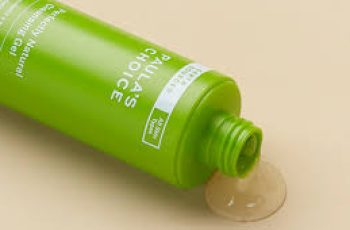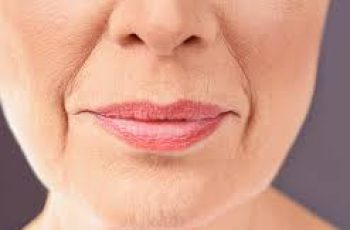Can Hyaluronic Acid and Salicylic Acid be used together?
You can certainly use these two powerful ingredients together. In fact, many skin care experts explain how the combination of moisturizing hyaluronic acid with the pore-cleansing and exfoliating benefits of salicylic acid works. You’ll also find that due to the different pH levels of the two ingredients, you can rest assured that using two layers won’t result in irritation or imbalance, but will instead result in a healthy, radiant complexion that’s plump, youthful, and perfectly clear.
However, this is just the tip of the iceberg when it comes to using hyaluronic acid and salicylic acid together. In today’s article, we’ll take a detailed look at what happens when these acids are used together. So let’s jump right in and learn more.
What Not to Mix with Salicylic Acid?
Salicylic acid is one of the most commonly used beta hydroxy acids in over-the-counter preparations. You’ll find this clever acid available in different concentrations, and all are known for their high potency. However, you need to be careful when doing this to ensure that you don’t accidentally damage your skin. Therefore, it’s best not to mix salicylic acid with certain ingredients to avoid unwanted irritation or reactions. The main skincare ingredients that should not be mixed with salicylic acid are:
Retinol
Glycolic acid
Benzoyl peroxide
Vitamin C
If you mix these ingredients with salicylic acid, you will find that it can be too much for your skin. This can lead to imbalance and a host of different skin issues, including severe dryness, itching, redness, and rashes. If you want to know exactly what not to mix with salicylic acid, we have a dedicated blog post on the Beauty Insiders blog that can answer your questions.
Can I use salicylic acid with hyaluronic acid and niacinamide?
Yes, you absolutely can! Using all three ingredients together requires some organization. What I mean by this is that you need to know when is the best time to use each ingredient to get the most out of them. For example, choose an exfoliating toner that is rich in salicylic acid, as this can remove dead skin cells and unclog impurities and bacteria in the pores. Follow up with hyaluronic acid to moisturize the skin. Finally, you can use another serum or moisturizer that contains niacinamide, which can improve facial hydration and regulate sebum production for a balanced and healthy complexion.
If you still have questions about using salicylic acid, hyaluronic acid, and niacinamide together, read our blog post.
When should you use salicylic acid on a regular basis?
You’ll find salicylic acid in a number of different skincare products, including cleansers, exfoliating toners, serums, face oils, and moisturizers. When to use salicylic acid depends largely on the products you use that contain an effective BHA. Of course, remember to apply your skincare products in the correct order, starting with the thinnest and working your way up to the thickest.
My simple advice is to not use more than one product with salicylic acid, as this can cause your skin to become over-irritated and feel tight, dry, and uncomfortable. Remember: If you have questions about using salicylic acid or a new skincare product in your routine, it’s always best to consult your doctor or dermatologist.
Should I use salicylic acid or hyaluronic acid first?
If you want my advice, I recommend applying salicylic acid to your skin first. Ideally in the form of a cleansing or exfoliating growth cream, as this will remove unwanted residue, bacteria, impurities, and dead skin cells from the surface. You will also notice that any product you apply afterwards will be absorbed into the skin very quickly since you have cleared away any buildup or physical barrier on the skin.
Follow up with a hydrating serum containing hyaluronic acid to boost hydration for plump, radiant, and youthful skin. It will also soothe the skin and prevent dryness after using salicylic acid, which can easily strip the skin of oil.
Can hyaluronic acid be mixed with moisturizer?
Absolutely! In fact, you will find that mixing hyaluronic acid with your moisturizer allows your skin to reap the benefits of both ingredients. This is due to the hydrating properties of HA (hyaluronic acid), which ensures that every gram of water from the air around your face and from your skincare formula is absorbed and locked into the underlying layers.
When you mix hyaluronic acid with your moisturizer, you are simply ensuring that the HA is able to do its best work without any side effects. What I mean by side effects is the rare event that the hyaluronic acid you apply topically to your skin does not absorb water from the atmosphere or your skincare products, but instead absorbs water from the underlying layers of the skin, causing dryness and weakening the skin barrier, leaving it vulnerable to free radical damage.
Should I use a facial toner before applying hyaluronic acid?
Yes, absolutely! Especially if the toner contains an acid like salicylic acid. This is because salicylic acid is oil-soluble, which means it can penetrate deeper into the skin than other acids like glycolic and lactic acid. By penetrating deep into the pores, BHA can detoxify them, clearing out excess sebum, bacteria, and dirt. While this works well for skin clarity, it can also cause dryness, especially for those prone to sensitivity. Luckily, following up with hyaluronic acid can eliminate any signs of dryness and irritation, leaving skin clear, healthy, and balanced.
Follow us on Instagram for more pro skincare tips, advice, and information about new product launches. If you have any questions about skincare, reach out to me via DM.
DQH Knowledge drop: In your 20s, your skin cell turnover decreases. (Cell turnover is a key component in keeping your skin youthful.) You know what else slows down? Your collagen production. Starting in your 20s, collagen decreases by about 1 percent per year. Should you want to prevent fine lines and wrinkles, start by eliminating behaviors that contribute to premature aging. “If it’s bad for you, it’s bad for your skin,” says dermatologist Michel Somenek.
“Cigarette smoking reduces blood flow to the skin and causes premature wrinkling and a dull skin texture. Making the repeated pursed motion to inhale can also cause smoker’s lines. Alcohol and recreational drugs are toxins for the skin that damage its cellular structure and DNA,” Somenek tells us. “The faster you eliminate vices while you are young, the better chance your skin and body have to recuperate.” Also, adopting an anti-aging routine in your 20s is key. After all, the best offense is a good defense. We spoke to Somenek and experts Joshua Ross and Audrey Kunin to find out more.
Keep reading for the best anti-aging products for your 20s, according to skincare professionals.
Sunscreen
“We all know that the sun is the number one cause of skin aging and starting the prevention in your 20s is very important,” Ross says. “The majority of your sun damage won’t start to appear until you’re in your 30s, so don’t wait until you see it surface or you’ll be behind the curve. Stay ahead of it with a good-quality zinc-based sunscreen worn daily.”
Farmacy Green Defense Daily Mineral Sunscreen
An invisible sunscreen with SPF 30, plus botanical extracts meant to protect skin with tons of antioxidants. Bonus: It’s clean and fine to use under makeup.
Bareminerals Complexion Rescue™ Tinted Moisturizer Broad Spectrum SPF 30
Although we recommend you use your SPF and moisturizer separately, we also understand moments when you don’t have time or energy for that extra step. For those times, this bareMinerals moisturizer is a great thing to have on hand.
Vitamin C Serum
“A great introduction to anti-aging is to start with a vitamin C serum in your morning skincare routine,” Ross says. “It’s a powerful antioxidant that will neutralize free radicals and brighten the skin.” He adds that it’s a great way to counteract the effects of the sun’s harmful rays, which, as previously mentioned, are among the biggest causes of premature aging.
Drunk Elephant C-Firma™ Vitamin C Day Serum
The Drunk Elephant C-Firma is a lightweight serum that promises to give skin a glow by combining the brightening powers of vitamin C with ferulic acid, l-ascorbic acid, and vitamin E. The included sodium hyaluronate is meant to replace hydration loss, so you shouldn’t have to deal with any irritation.
Sunday Riley C.E.O. Rapid Flash Brightening Serum
This potent serum is jam-packed with vitamin C (15 percent, to be exact), which means it’s a potential superstar at both brightening skin and dousing it in antioxidants.
Peptides
Using peptides on your skin has many benefits, says Somenek. “The skin barrier is what defends the body against pollution, UV rays, bacteria, and toxins. It can be damaged by several everyday factors. Using topical peptides aids in building a stronger barrier,” he says. “Peptides comprise elastic fibers, which are a type of protein. These fibers help to make skin appear taut and firm. Peptides can also help repair damaged skin, relieve inflammation, and even out skin tone. Some peptides can kill acne-causing bacteria that is common in 20-somethings.”
Kunin agrees, saying, “Peptides are an excellent entry point for supporting collagen.” She recommends looking for face and eye treatments that contain these collagen-boosting powerhouses.
Charlotte Tilbury Magic Eye Rescue Cream
This Charlotte Tilbury super-emollient eye cream has a base of coconut oil and shea butter (read: it’s incredibly hydrating). Botanicals plus peptides are meant to help reduce dark circles and boost collagen, respectively.
This creamy moisturizer serves up potent collagen-boosting peptides and pycnogenol, and antioxidant-rich vitamin C. “Instead of sitting on top of the skin, peptides penetrate the outer layer so they go deep. The ‘signals’ they send tell the cells to produce elastin and collagen, which are needed for youthful-looking skin,” explains Somenek.
At-Home Peel Pads
Remember that skin cell turnover fiasco we talked about earlier? One way to help support it is by exfoliating. “Exfoliation is important to help keep skin fresh and luminous,” Kunin says. She recommends using at-home peel pads as an easy and effective way to exfoliate.
“The goal in your 20s is to fight the slowing pace of cell turnover. It is wise to use products that gently exfoliate, yet still remove oil and other impurities. Products that have Alpha Hydroxy Acids (AHA) or Beta Hydroxy Acids (BHA) are a good choice.”
According to Somenek, you should only exfoliate two to three times a week. “People of all ages are guilty of over-exfoliating and that can be too much of a good thing,” he says.
Dermadoctor Kakadu C Intensive Vitamin C Peel Pad
A few swipes of this Derma Doctor powerful peel pad promise to leave your skin glowing and smooth, thanks to the seven (yes, seven) types of chemical exfoliants, including AHA and BHA. It also contains vitamin C via Kakadu plum extract for added brightening and antioxidant protection.
KEY INGREDIENTS Kakadu plum extract is sourced from the Kakadu plum, a fruit grown in northern Australia. It contains vitamin C, which restores the skin’s natural barrier, increases collagen production, and soothes irritation.
Dr. Dennis Gross Skincare Alpha Beta® Universal Daily Peel Pads
These are the gold standard of peel pads, with a cult following and over 900 five-star reviews on Sephora. They’re easy to use and contain a blend of anti-aging exfoliating acids.
Emollient Night Cream
“In your 20s, you need to start upping the hydration in your skincare routine. You may have been cautious of over-moisturizing because of acne in your teens, but as you enter your 20s, your skin transitions and becomes drier,” Ross says. “I recommend an emollient night cream added into your evening skincare regimen.”
“Twenty-somethings need to make sure that they are not using creams that will clog their pores and cause excess oil production,” says Somenek. Opt for non-comedogenic products.
Cerave Skin Renewing Night Cream
One great choice is the CeraVe Skin Renewing Night Cream, which is a non-comedogenic night cream that leaves skin soft and glowy. It combines the moisturizing powers of ceramides and hyaluronic acid.
RoC Retinol Correxion Max Hydration Creme
“The best night cream ingredients contain retinol, benzoyl peroxide, and/or salicylic acid or hyaluronic acid. The goal is to moisturize, yet remove excess oil,” says Somenek. This Roc Retinol Correxion cream fits the bill as it contains both hyaluronic acid and retinol so it promises to moisturize while also being non-comedogenic.



